Stranger Things: Puzzle Tales is a puzzle RPG that warps you in the mystery-laden town of Hawkins where your main ace against supernatural threats is the cast of the well-loved hit series.
While there are scores of games coexisting in the same genre, Stranger Things: Puzzle Tales has its unique appeal as the first of its kind to be inspired by or designed after a “recent” literary work; most of the options in the genre are inspired by general mythology, sorcery, darkness, zombie apocalypse, or straight up “cute” fiction.
Stranger Things: Puzzle Tales wisely veers away from counterparts with visuals that are either too grand, exaggerated, or cartoonish. While the visuals technically fall under the cartoon/comic cluster, it’s the script and story flow that happens in between battles that makes it stand out from the rest especially if you know a lot of stuff about the series because it has an established lore to tap into. Still, even if you don’t know much about the Stranger Things universe or have not even seen one episode yet, you might be surprised how the game can get you engaged, nonetheless.
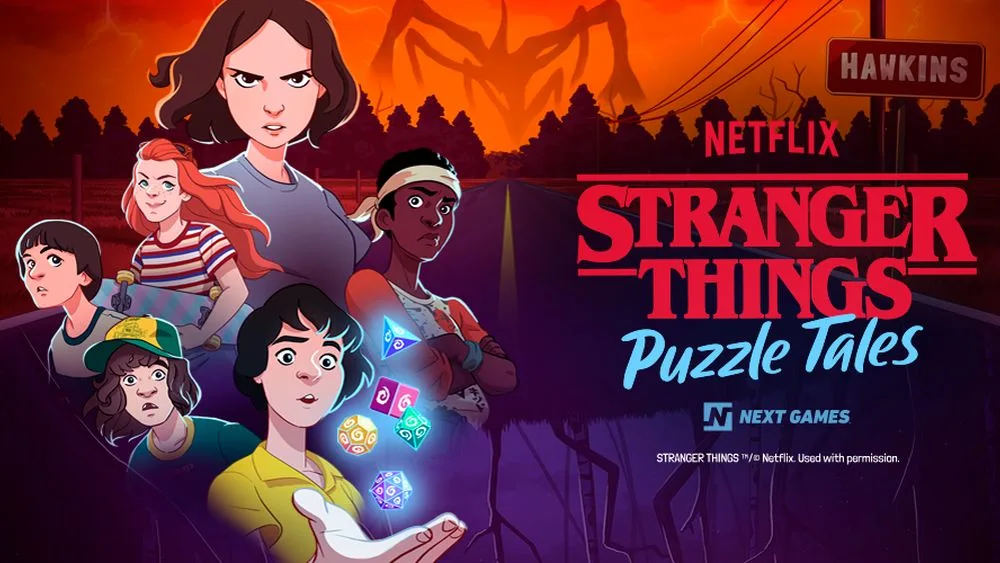
The team behind this iOS and Android title is Next Games which only has two other titles under their belt as of yet, The Walking Dead: No Man’s Land and The Walking Dead: Our World. The list may yet be short but it undoubtedly speaks one thing clearly: the game studio is entrusted to carry the names of titles that have seen miles and miles of success in print and TV media.
Like in other puzzle RPGs, lining up tiles (or in this case, dice) is key in Stranger Things: Puzzle Tales . But you’ll need more than just one key to progress through missions. If you’re a Candy Crush veteran, that experience will barely help as simply spamming lines will not get you too far.
Not to worry though, we’ve compiled a detailed Stranger Things: Puzzle Tales beginner’s guide to make sure you’re equipped to trounce on whatever flayed threat that dares cross your path. This guide will cover the basics, align your sights on what to watch out for when in combat, and how you can prepare for each mission.
1. Understanding The Basics Of Stranger Things: Puzzle Tales
When you begin, there is an in-game guide interface that would offer you enough information to get you comfortable sitting at the driver seat not just in combat but in knowing the other features such as the Shop, Story, Base, Rewards, etc. We suggest never to skip those instances as the information they’ll give you would be beneficial.
Unlike in more traditional line ‘em up puzzle games, in Stranger Things: Puzzle Tales you are not given a star rating based on how you clear a mission. Normally, a flawless level clearance will give you three stars; losing a life will give you two, barely surviving will give you just one.Here, your one and only objective is to defeat all waves regardless how many team members make it through the end. While there’s no denying that star ratings can sometimes give an ego boost, trust us, you’d feel thankful just to survive in some occasions. If we must further clarify, all you need is to get one of five members to stay alive as you clear a mission.
The Story view will show you your current location in a chapter’s roadmap and it is where the action happens as it has the Play option which will lead you to the game’s combat mode. In combat, your board will offer seven columns and five rows of dice and you only need to line up a minimum of three dice vertically or horizontally to activate them and issue an attack.
Every character that you’ll get is assigned with a permanent color. For example, lead characters Mike has orange, Eleven has purple, Lucas has red, Dustin has green, and Will has Blue; activating dice that bear a character’s colors will eventually fill their energy bar; the more dice of their color being let off, the faster this charging process will happen. This is a crucial matter as it will make each character’s active skill available for use and we’ll touch it up later. Now, knowing the importance of color is essential as there is a rock-paper-scissors element in Stranger Things: Puzzle Tales.
The basic cycle is Green > Blue > Red > Green where green deals a modified, stronger damage to blue and blue does that to red and red does that to green. If you do the reverse, you will still deal damage but it will be weaker. Purple and Orange is a matchup on their own basically, as purple will register a strong damage to orange and vice versa; these two colors will meanwhile deal weaker damage when used against enemies sharing colors with the dice accordingly.
Filling up a character’s bar with energy will let you use their active skills. Each character has one active and may have up to two reactive (or passive and situational) skills that may be offensive, defensive, or tactical. Most of the active skills, meanwhile, are offensive which you may choose to spam each time they’re available or conserve up until the next wave. On the flipside, enemies with an energy bar on them get charged up each time they sustain a damage instance; you’d know their skill is available for use if their turn counters become a burning letter S instead of a number.
In this scenario, there are two characters with the active skill ready for use, but the enemy is just an attack away from dying and the “Wave 2/3” on the upper left corner suggests that there is still a wave of enemies after. In such cases, it’s generally better to just do a normal dice-match attack than using a skill.
Remember, your objective is to kill the creatures and beings you’re pitted against and they do have their own colors. You can tell it by looking at the color of the circle base they are standing on. Thus, knowing your enemies is instrumental, too.
2. Knowing Your Enemies
For example, if an enemy stands at the left side and it only occupies the first and second columns and then you horizontally match dice in the second, third, and fourth columns, you will only deal one damage instance, the one in the second column; naturally, activating a dice from the third column and beyond will do no damage and the only benefit from it is the Bravery gain for your team member that has the activated dice’s color.
In the screenshot above, three red dice spanning columns two, three, and four was released and only one registered damage (see the number of “missing” dice from the board and the color of the “splash” on the enemy hit).
Bigger opponents, like elite creatures and bosses, naturally occupy more columns; this would be their only drawback which is only right since bosses have high health points, abilities, and can deal a great amount of damage.
Quite fortunately, enemies with a big hitbox may “share” one hitbox together giving you the rare chance to hit both by activating dice in a column they share in. Apart from their usually huge size and their grotesque or overly-detailed appearance, you can tell bosses and elites apart from common enemies as they are the ones with an energy bar.
Some elite creatures and bosses have an ability that can buff themselves, heal their teammates, or even summon “fresh” minions when they are in low health already. The spawn points of the summons are also random and there will be times that these fresh summons may take up a few hit boxes in front of them. When this happens, it is better to look for dice matches in the unshielded hitboxes because gunning the fodder(s) first will be counterproductive and dangerous. Remember, bosses can deal a high amount of damage and can knock your entire team down in a prolonged battle.
You may often find yourself opposite a wave of enemies with obstacles or damage fodders in front of them. In such scenarios, the only way to damage the enemy behind them is to eliminate the fodder or activate a vertical four-dice match. Obstacles have health points too, although they cannot attack back, but their presence can bring annoyance as some character skills will hit random targets and that includes obstacles. Imagine the damage opportunity they can waste. Eliminating them ASAP, therefore, is essential.
As obstacles are always on the front, this is the perfect spot to mention that activating four or more dice horizontally will release an attack that will hit all enemies in the frontline. You can easily tell if an enemy unit is just an obstacle if it is simply still and shows no movement animation in contrast to flayed or possessed inanimate objects. The quick rule to this is if it moves, it can attack. In times that obstacles do show a bit of animation or movement look for a hand signaling a stop sign as it will have that for a turn counter instead of numbers.
As they say, knowing your enemies is half the battle, so understanding what they can dish out on you, when they can hit you, and how you can hit them will prove to be important in your journey through the chapters.
3. Understanding Your Team For Strategy
The early battles in Stranger Things: Puzzle Tales are designed to let you feel the power of your characters and the relative ease of issuing attacks. However, succeeding in the game requires you to look beyond what the early-game offers. If you’re a Stranger Things fan, it is understandable to have a fixation to only keep the main cast in your active lineup and this section of the guide is dedicated to open your eyes to the battling aspect of the game. This section will cover character skills and utilization, target selection, and team composition.
Unfortunately, using the characters will not make them earn XP/experience for a “natural” leveling up process like what’s true in games–say in the RPG genre–hence promoting them to the next level will always mean spending resources.
As you win through missions, you will eventually pick up items which you can equip on your characters. Items can bolster their health and attack stats which is why it is wise to always check their pages to see if there are equippable items available for each. You’d know that an equipment is available for equipping or upgrading (in cases of already equipped ones) if there is a red exclamation mark on the slot.
A character will only have their passive/reactive skill available in combat once they reach level 21. Reactive skills are valuable as they give your team a tactical edge. Remember, you can only take up to five characters in your team at once and you will battle multiple waves in each mission. Reading the benefits that each character’s reactive skill gives will help you form better strategic team compositions.
Speaking of team compositions, you may, at times, find it opportune to tweak your lineup as there are levels where enemies will lack a particular dice color or having a supportive character that has heal or buff may improve your chances of survival. You only need one healthy character to finish a mission and one couldn’t tell when a heal may come in clutch.
Most active skills offer nukes that let you deal extra damage even without matching dice. Do take time to read what a skill does, you can do so by reviewing the characters in their pages through the Roster or by holding their portrait at the bottom of the skills when already in combat.
Your First Five Characters
There are dozens of unlockable characters in Stranger Things: Puzzle Tales, but in this guide we are focusing on the main protagonists of the franchise, especially that acquiring them is rather guaranteed (the other characters has to be drawn using the Radio for Characters feature in the Base which relies on a Random Number Generator engine or RNG).
Use this one whenever available ASAP, not unless you’d want to conserve it for a next wave. As the skill is meant to check for three targets, having only two targets will result in just a two-target “nuke.”
As one of the most powerful characters in the Stranger Things universe, Eleven has a strong. yet somewhat situational active skill. Her Psychic Pummeling has a great damage potential and we must say, the only skill with an incomplete in-game description. Psychic Pummeling can actually hit 2-4 targets per cast and it will deal twice the damage for enemies with an energy bar progression.
Once released, the skill will seek two targets and if one of the damage receivers has an energy, the damage pulse will continue to “crawl” unto another target. It will deal two damage instances amounting to 200% of Eleven’s attack power to each affected target twice. When there is only one target across the board, it will deal 2×200% damage to an enemy without energy and 2×400% if it has.
True to how Dustin Henderson usually brings supplies for the group in the series, his skills in Stranger Things: Puzzle Tales is utility in nature. His skill, Shiny New Gadget, will activate an entire, random row upon use. The activated row will be released on your next attack regardless of your match’s position on the board. As such, it is ideal to activate a match that does not touch a single dice in the row so his skill can be treated as a one-row worth of bonus damage.
As the “missing boy” that helped build up the conflict in the series’ earlier days, Will Byers makes up with his presence in Stranger Things: Puzzle Talesfor hemanifests in multiple ways. In combat, Will’s active skill, Face of Fear, boasts as one of the few targetable skills in the game. It will deal 300% of his attack power to your selected target.
If the target has more than 30% of health, your team member with the lowest health will be given a Regen buff for the next two turns healing 10% then 5% of health, respectively. Will also represents the game ‘s passive income source which we will discuss later in this guide. He is however, only unlockable in Chapter 3 and if you have read the guide this far, you’d likely reach him with little trouble.
As previously touched, a character must have a fully-charged energy bar to use an active skill. It is important to note, however, that the skill may only be usable after the turn it was filled in. Since a turn also includes that of your enemies’, there is a chance that characters at low health might be knocked out before they can use skills.
You are almost always constantly outnumbered and the active skills will be your means to level out the playing field. Some active skills, like that of Lucas, can hit multiple targets while Eleven and Mike’s can lay a high burst damage to a single enemy. Most active skills however nominate a random target so there is a chance that your ideal target may not be hit. On the flipside, some skills can land on enemies hiding behind a fodder.
Some skills are designed to prioritize non-barrier enemies, but for those that are totally random, it would be better to eliminate at least two barriers first. In that way, the multi-target skill will surely land on a relevant enemy.
If you stretch your team too far (or choose to not level them up to be at par with the levels of enemies in a mission), you may feel compelled to ignore conserving your skills and just unload them whenever available for extra damage.
It is entirely your choice to spam an active skill when available, but it is better to read the scenario. How many “unnecessary” potential targets are present? Are there available dice matches to kill off a remaining enemy to conserve the skill for the next wave? Will it be wise to use heal when only one character is in extremely low health? These are some of the questions you will need to ask yourself through your journey.
Being familiar with what your lineup can offer is the remaining half of the battle, but there are other factors you should be accustomed to in a bid to be better in Stranger Things: Puzzle Tales.
4. Attack And Damage Modifiers
As the combat mode is about dealing damage, learning what helps, prevents, or manipulates damage instances will improve your chances of winning. These dynamics come in as statuses. Let’s now tackle the most common status and their effects.
A debuff will normally have a red color and a buff will be green. To learn what a currently applied buff and debuff does, just long press on the character or enemy you wish to check and then tap on a status. The number of turns the status will remain active shall also be displayed.
Buffs
Dodge: The “nastiest” buff there is would be Dodge because it negates one attack instance each. If a dodge buff indicates three, it means that unit will only take damage after it has been hit at least three times. Dodge does not expire through turns and must instead be “consumed.” Both you and your enemies can earn a dodge status through passive skills at both ends. The symbol for the Dodge status is a green shoe.
Bravery: One of the best buffs to look out for on your team is Bravery. Whoever has Bravery on your team will deal an extra 25% damage, but can only be enjoyed within the amount of turns it displays.
For example, you have a green character with a Bravery buff, if on the next turn you issued an attack for a blue character, the buff will not be used and just fade. Bravery is given by some reactive and active skills that you’ll encounter along the way. The symbol for the Bravery status is an arm on a bicep flex.
Not really game breaking, but as they say, in a war, it is better to have a shield than no shield at all. A guaranteed way to earn the shield is to get Mike on board and make him reach at least level 21 because his reactive skill is meant to give that each wave start.
Armor: Similar to Shield, Armor is another damage-mitigating status that helps with your team’s survivability. Unlike Shield, Armor does not negate a solid value but it instead reduces incoming damage by 25% to whoever has it. In essence, it has the potential to block more damage. This status is mostly just accessible to your team through some active and passive skills of intermediate characters. The symbol for the Armor status is football helmet.
Distract: One would think that there is no “tank” dynamic in Stranger Things: Puzzle Tales until he encounters the Distract buff. A unit that has the Distract buff will eliminate the randomness of incoming attacks as the wearer will be prioritized for the damage instances within the number of turns it displays. Both you and the enemy team can earn this buff by means of active and reactive skills. The symbol for the Distract status is a target board with an arrow on it.
Regen: As “introduced” earlier when we briefly described Will’s skill, the Regen buff will continue to restore health to the wearer for the number of turns it has. The Regen status’ symbol is a heart.
Debuffs
Weakness: The direct opposite of the Bravery buff, the Weakness debuff means that the affected unit will deal 25% less damage for the number of turns it is on. In application, it is not really too combat-altering as the lessened damage can easily be negated accounting color counters. This debuff is only accessible to your enemies. The symbol for the Weakness status is a frowning face.
Poison: The developers are kind enough to not make this status (with a daunting reputation in the gaming realm) as impactful compared to what is true almost elsewhere. The Poison status in Stranger Things: Puzzle Tales still signals the presence of a damage-over-time debuff, but it only deals a miniscule amount of decreasing damage for the turns it is active on. It starts at 5% and will gradually lose a percent as it expires. It is mostly accessible just to your enemies. The symbol for the Poison status is a droplet.
Vulnerability: Akin to the Bravery buff, the Vulnerability debuff will make it possible to deal an extra 25% of damage to whoever has it. All the damage a unit with Vulnerability takes for the rounds it is active on will be amplified by the said percentage. This debuff is accessible to both ends through active or reactive skills or similar bonuses. The symbol for the Vulnerability status is a cracked heart.
What’s tackled above are just the most common statuses in Stranger Things: Puzzle Tales. The statuses will make you realize how the puzzle RPG genre has successfully carved its own path away from old school line ‘em up, tiles-matching puzzle games as there is no doubt that the addition of the buff and debuff dynamic makes things extra exciting.
5. Controllable And Uncontrollable Odds
The scaling of difficulty as you progress through missions has been wonderfully designed. You can stretch a team that is not fully-upgraded depending on how well you can read the enemies and prepare your team composition.
You will eventually be able to recruit other characters and find that their different set of active and passive skills may exactly be what you need to surpass the current roadblock you have. Recruiting can be done through the Radio for Characters feature when you get to Mike’s Basement A.K.A. your Base. It consumes one handheld radio which is a random drop or 10 diamonds per call which may be purchased with real currency.
Keep in mind however that it is random. Only use this feature when you feel lucky. In the screenshot below, a Radio call resulted in a rather weak character, Keith, who is only one-star rated and has a mediocre skill set.
While we’re at it, we must state clearly now that a newly-called character will always be level 1. If you are already managing a team of level 21s or above, you would need to spend resources to get the fresh recruit up to shape as he will deal little damage and be fairly easy to kill in a couple of shots.
When you are unable to conquer a mission, the game itself will suggest that you level your team up. There are no grind opportunities when you find yourself underpowered for a level yet as you cannot replay a stage, so eventually it will all boil down to your skills and intuitiveness in forming combos.
But nothing to worry much about, the upgrade currency (gold coins) is quite easy to farm as the mission clear rewards are surprisingly decent for a free-to-play game. As a sample for a normal mission clearance has been shared above in the Mission preview part, what we’ll show you below is the common rewards for clearing a portal mission.
What’s nice about the game is that it is actually generous for something that is free-to-play. Resources can be earned through clearing missions, accomplishing tasks, and claiming periodic rewards that passively generate. This passive resource generation is where Will manifests apart from combat; every eight hours, random resources will be generated by the Rewards feature through the Story view.
You don’t have to wait for the full eight hours for resources to appear, as time progresses there will be claimable rewards already. The rewards from Will always include character upgrade materials (Gold, XP, and Green Goo) and at times will give you equipment and other valuable resources (including a Radio).
Stranger Things: Puzzle Tales is not an energy-based game that forces you to wait once depleted, you can keep on playing for as long as you want. The only wall to hit here that would require waiting is if there is a resource required before you can level a character up that may only be acquired through the periodic rewards. The length of a playing session entirely depends on your ability to bank on your skills and luck.
While skill can be developed, luck, however, is an uncontrollable variable. Like in most games, RNG is a factor in Stranger Things: Puzzle Tales. You may at times be given with a limited board absent of combo opportunities or there can be a heavy imbalance of available dice colors that may coincidentally be weak against the enemies present. In such occasions, you have two options 1) challenge yourself beating the steep odds or concede and relaunch a mission in hopes to be given a better board.
When you’re at a loss for visible dice matches, the game will proactively offer hints. The hints will be in the form of two adjacent dice shaking. Keep in mind, however, that the offered hints are not the best moves available to you and may be ignored. A hint will only be the best option if it is the only one available. Meanwhile, if a board is fully locked or there are no available match opportunities, it will shuffle on its own at no cost. This also means that there is no option to force-shuffle a “dry” board.
The attacks of your enemies will also be random. There will be instances that they will appear to focus-fire one character, hence, the importance of having characters that can heal or give a shield in a lineup. Conversely, this can also mean that they might “distribute” their damage output which may allow you to reach the final wave of a mission, but puts your chances to victory at risk when facing a boss that can multi-attack. Don’t worry, though, as such bosses come very rarely.
The randomness of Stranger Things: Puzzle Tales also extends to recruiting as the characters you can call either through the handheld radio-paid or diamond-paid summon will be random. The chance to summon a one-star character when you already have a plethora of two-star characters always stands, essentially making it a gamble. Then again, you only gain if you take risks.
The controllable and uncontrollable factors of Stranger Things: Puzzle Tales is what can endear challenge-loving players to the game.
With this, we conclude our Stranger Things: Puzzle Tales beginner’s guide. We hope that you enjoyed reading this article and you’ve picked up at least a few useful tips to help you hurdle the challenges in the game. If you’ve been playing Stranger Things: Puzzle Tales yourself and have learned some tricks and tactics that weren’t mentioned in this guide, feel free to share your knowledge with us through the comment section below!

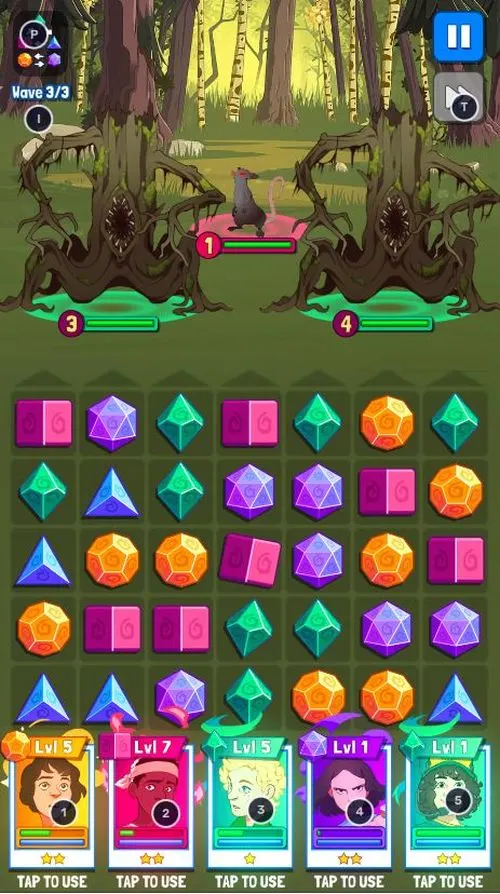

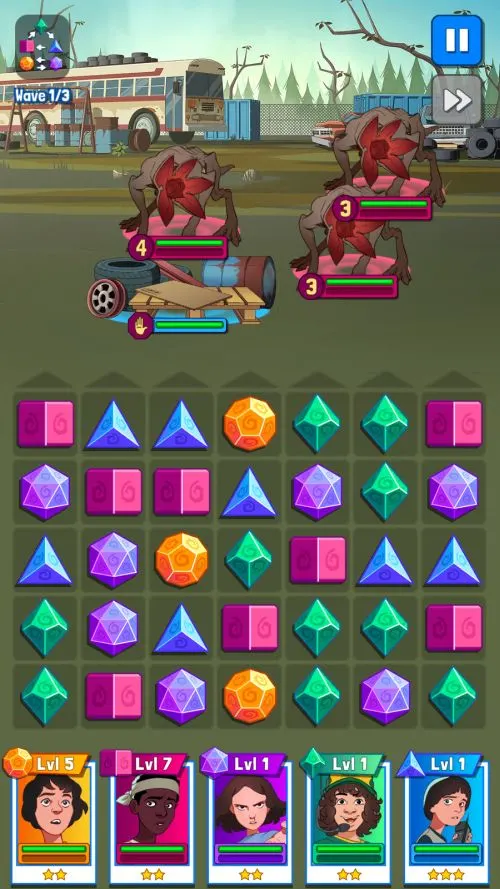
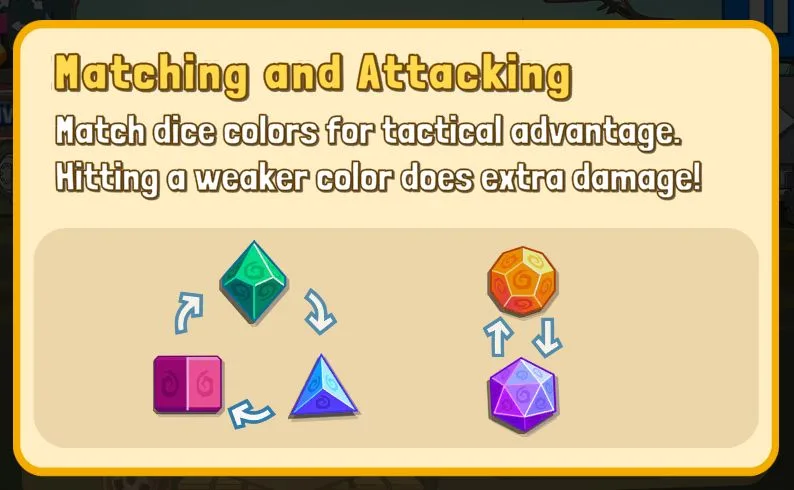
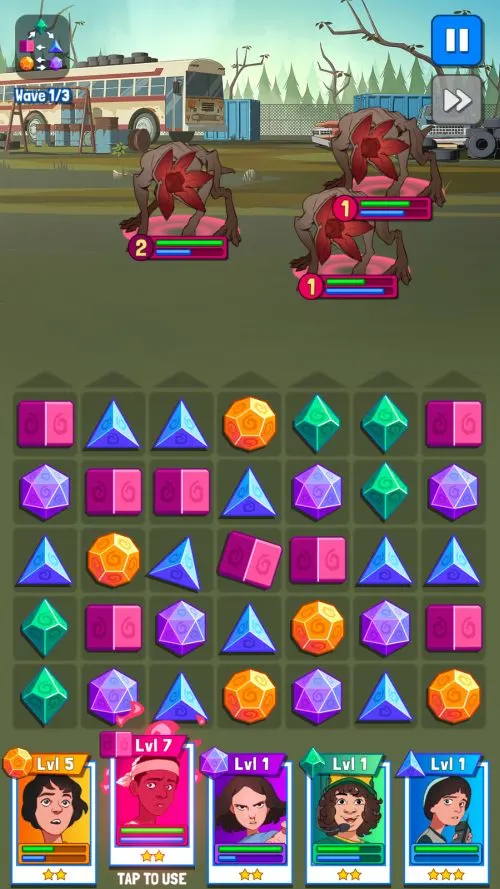
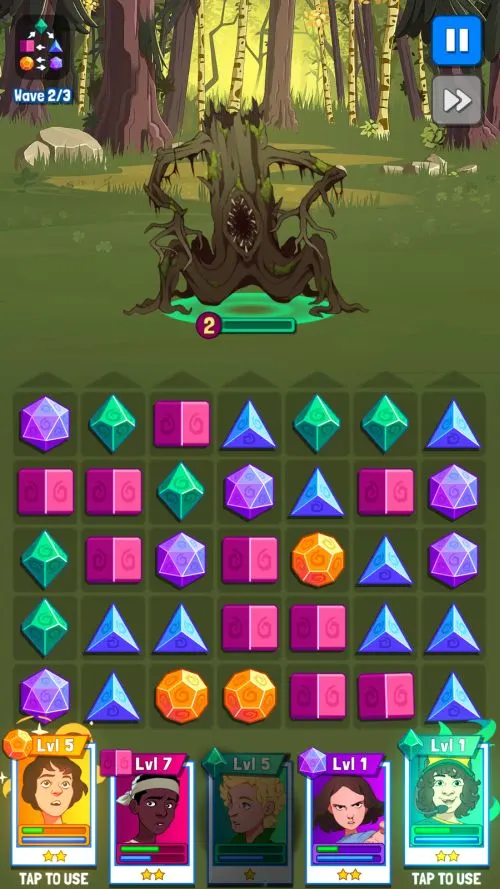
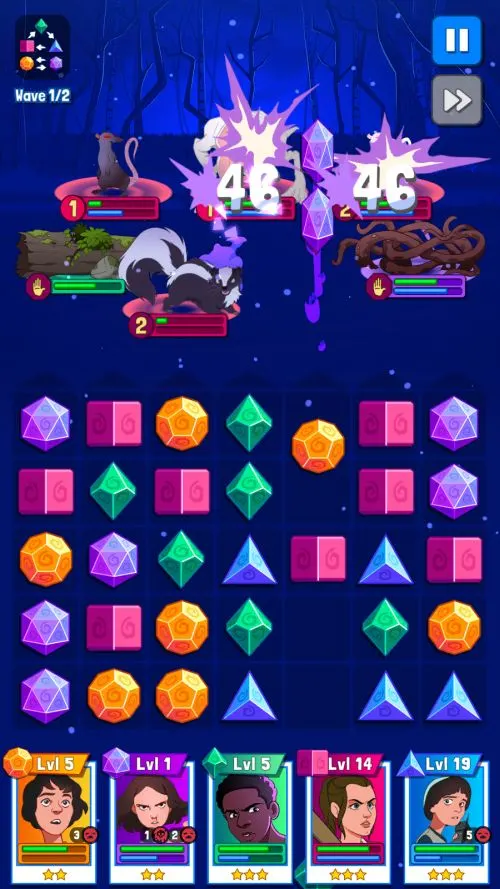
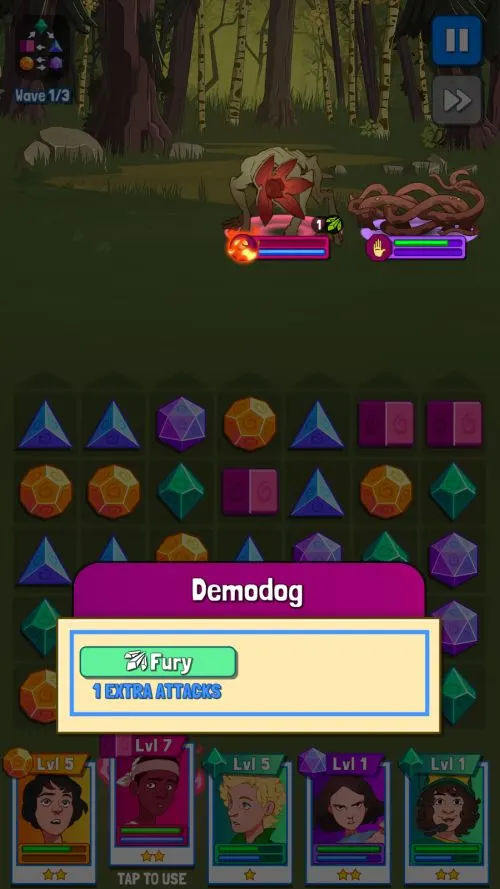
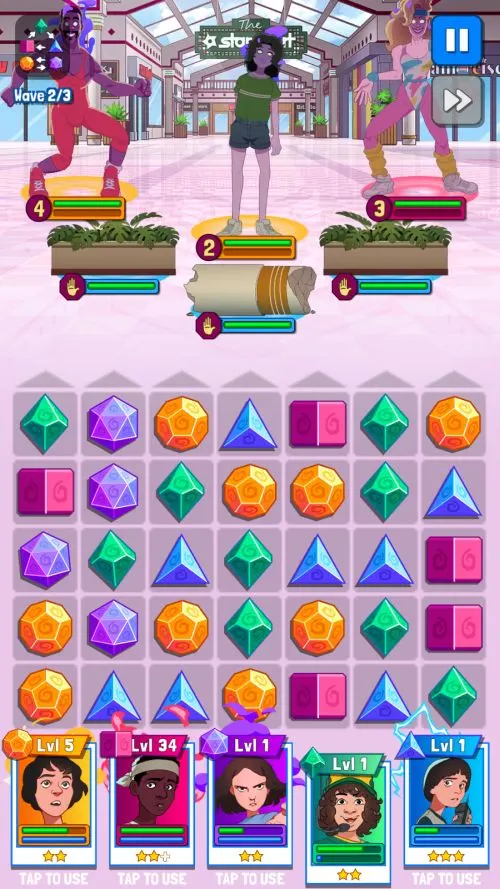


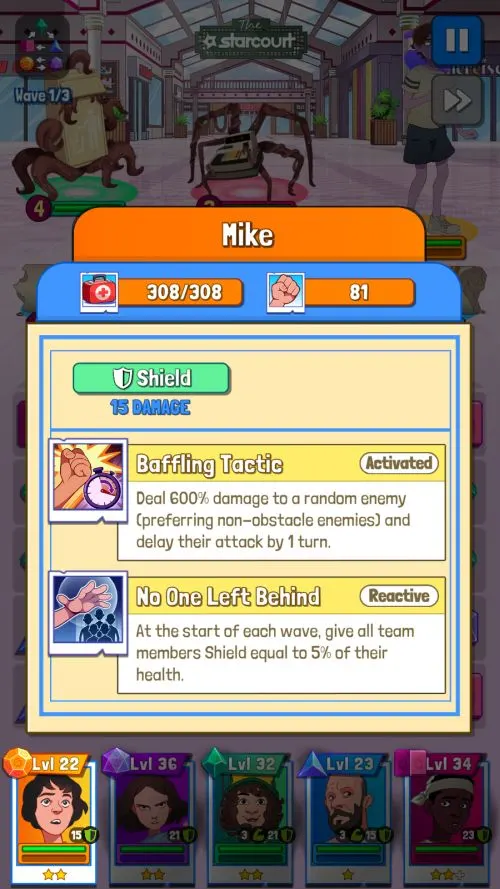
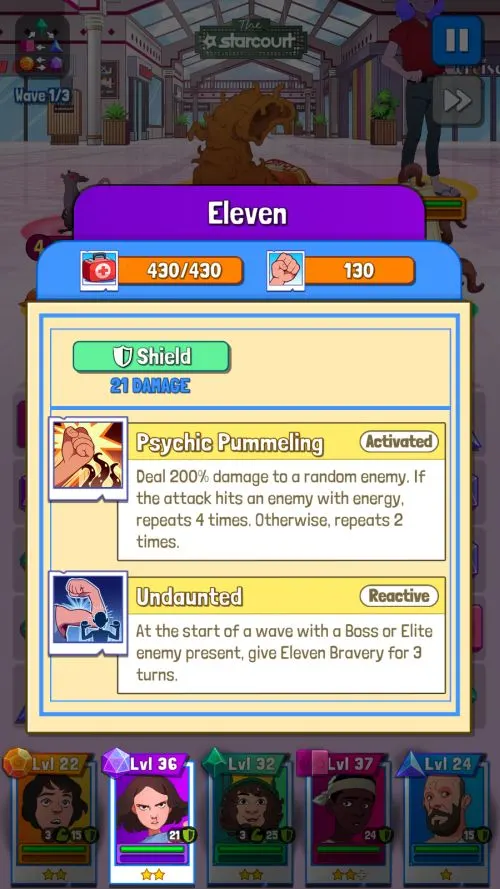
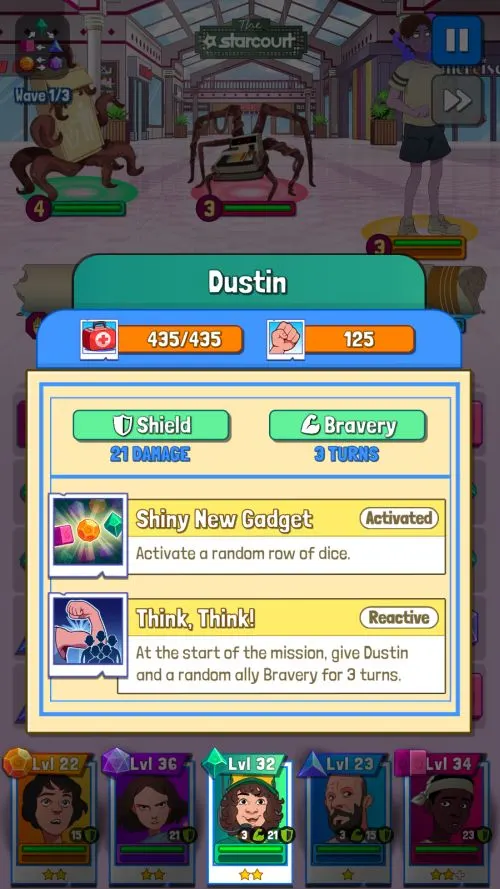
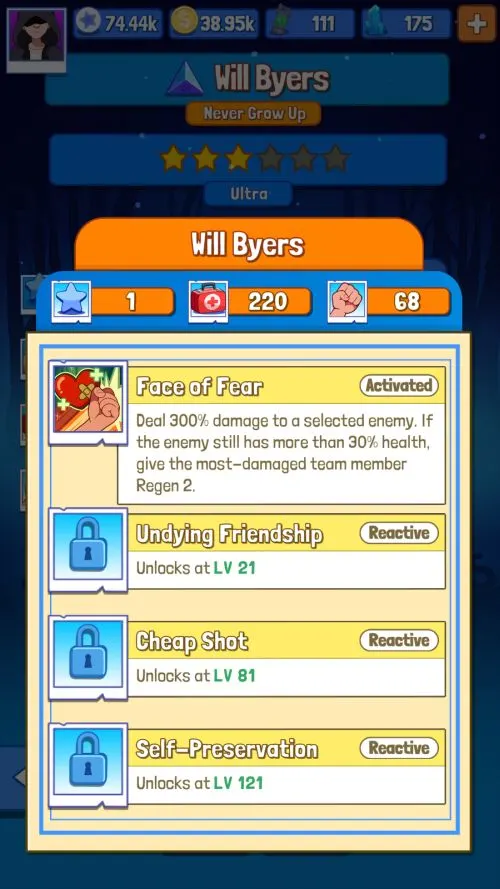
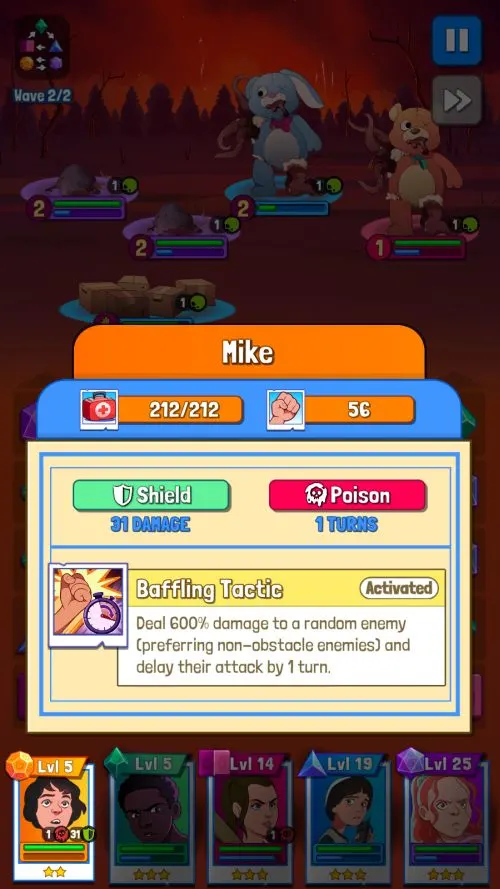
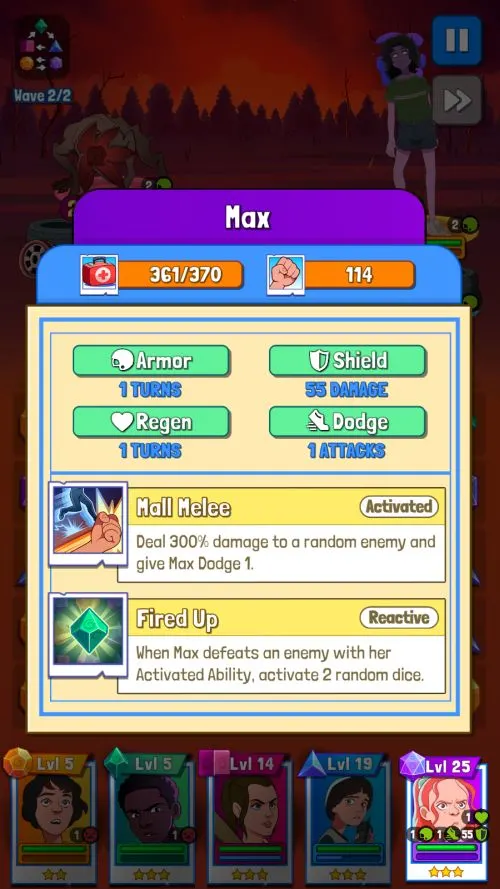
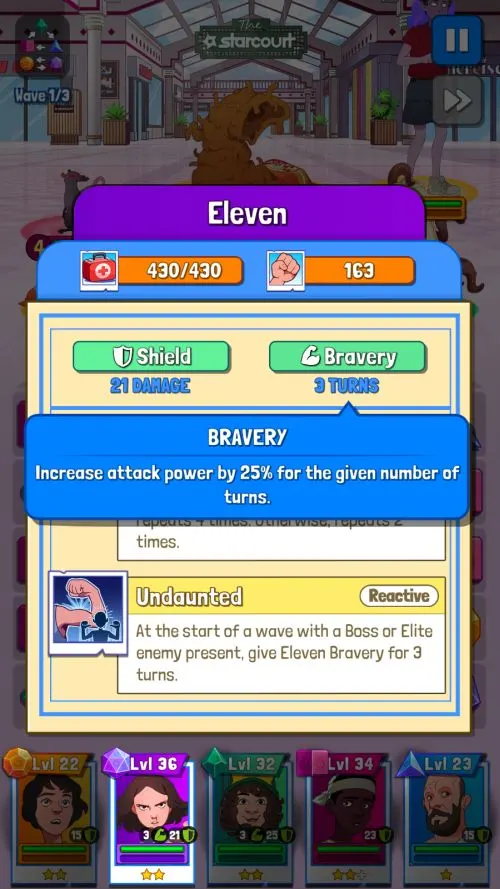
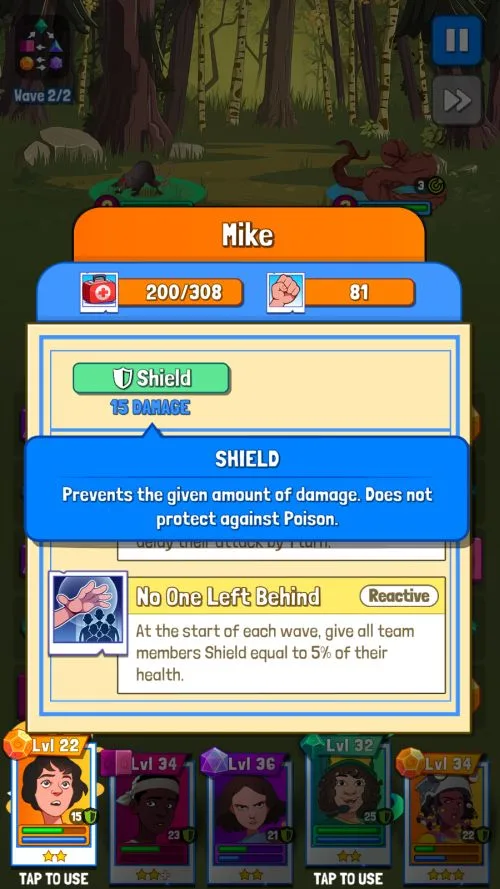
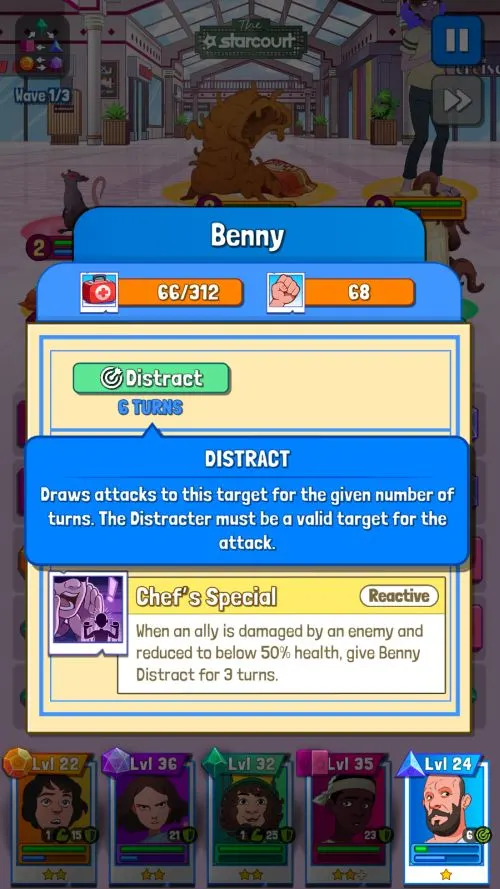
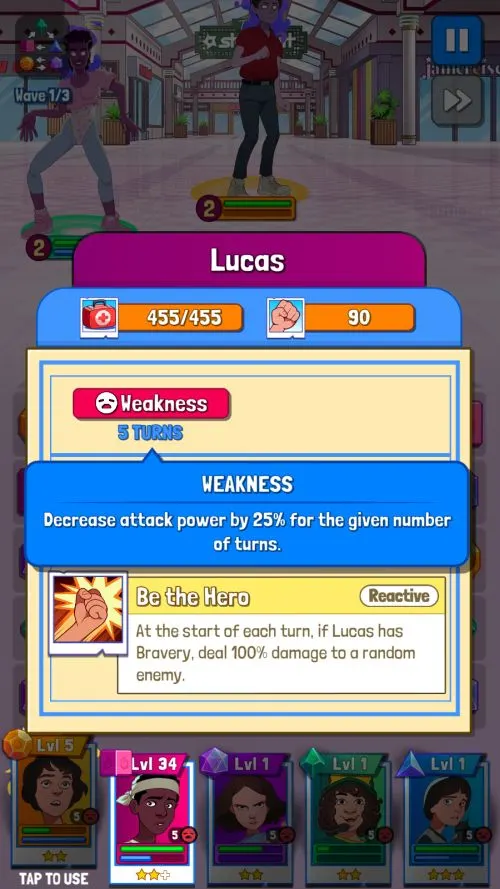
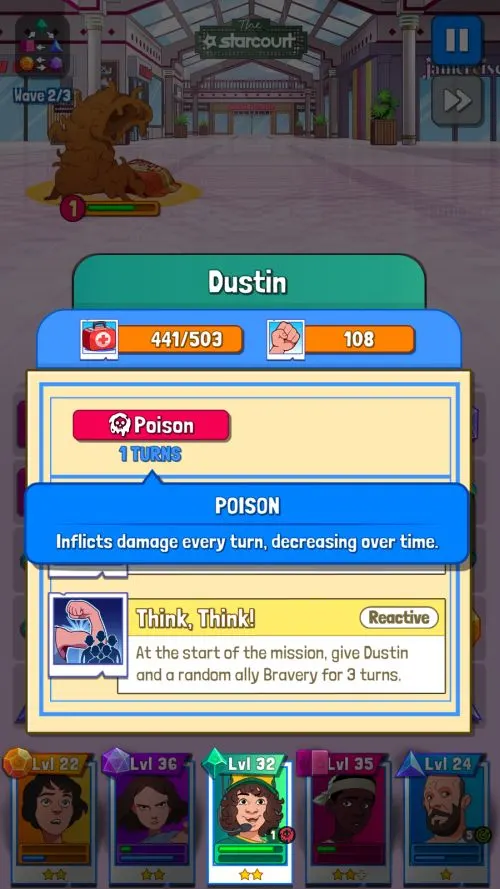
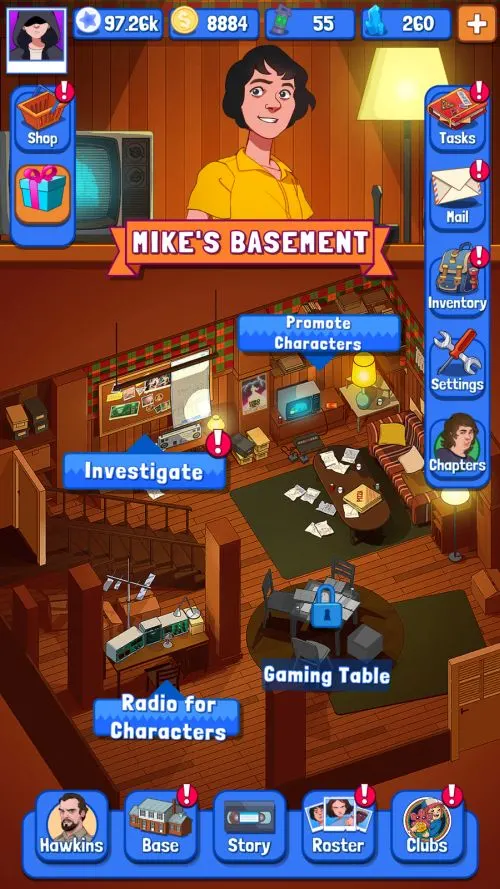
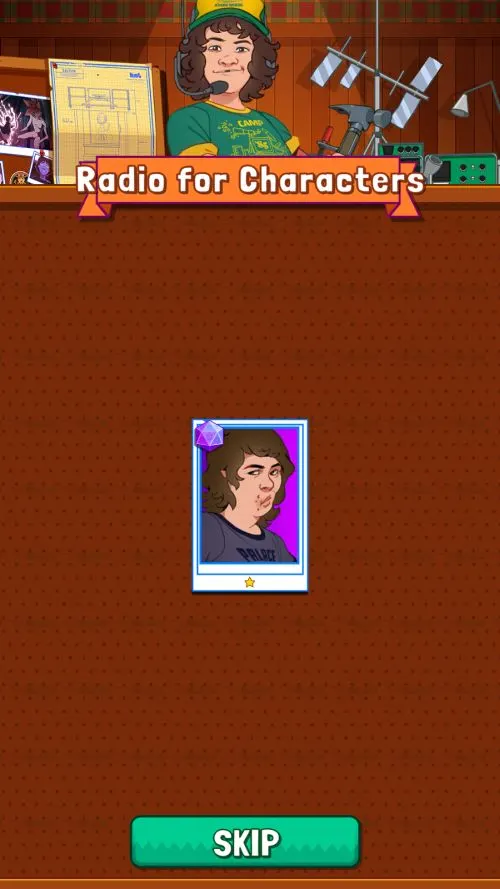
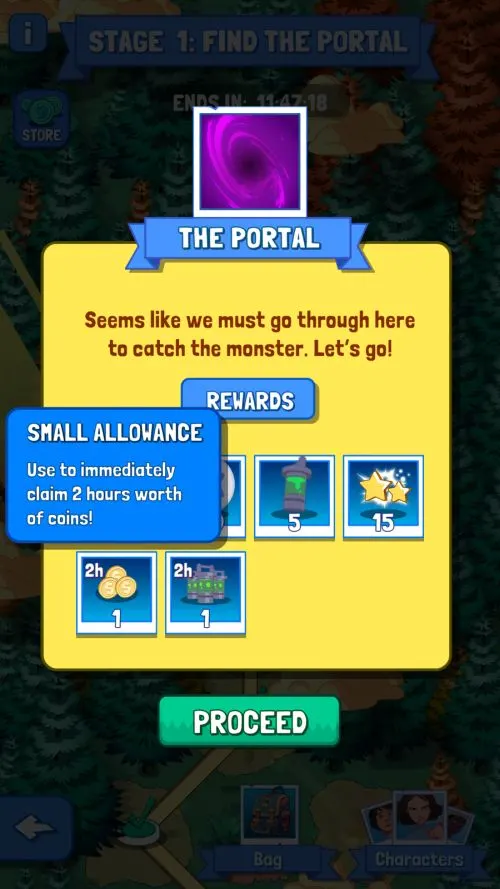
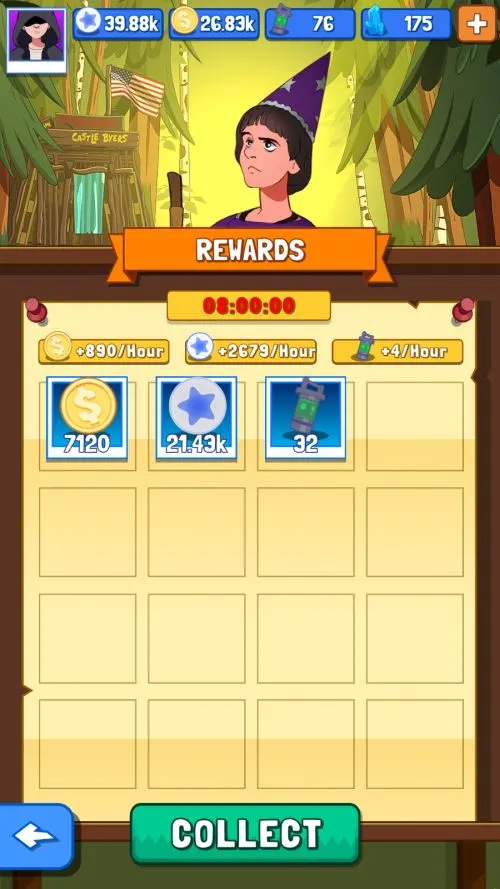
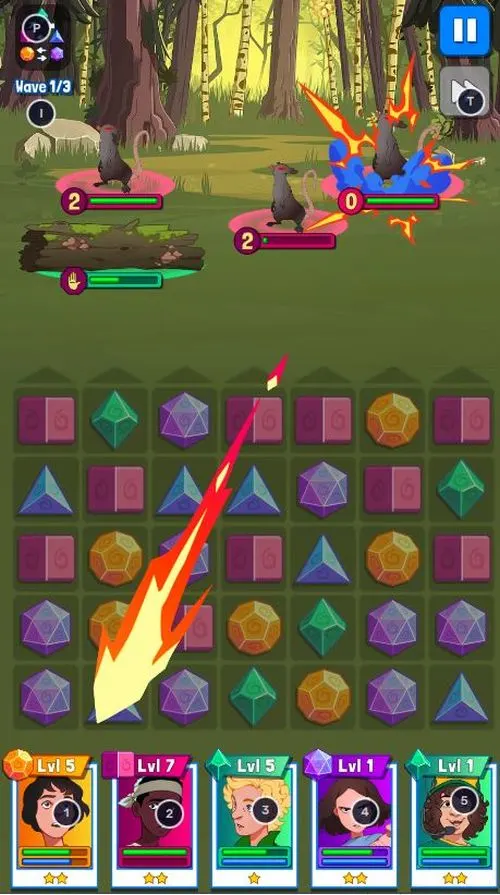
Dave
Sunday 25th of June 2023
This article is written as if all readers have played similar games before. It is pretty much useless when so much information is left out or unclear because the assumption is made that the reader knows about that information. 1) Team characters have 2 bars, a green and a blue. The article mentions the energy bar several times but neglects to say which one is the energy bar and what the other bar is. 2) Terms like buff, regen, poison, thorns are not defined or are unclear and no info is given how to tell if a character or enemy has any of these. There are other items and features not discussed or unclear but there's no point trying to list them unless an article revision is planned. Keep in mind for future tips and tricks articles that the majority of players looking for help are noobs and leaving out important info doesn't help them fully learn the game.
Cat
Saturday 1st of January 2022
Thank you for this guide! I've played for a while now and was guessing at what some of the UI was / did. Could you update this guide with how to make the best use of the Gaming Table? Also, promoting characters past level 100. Thanks! -Cat